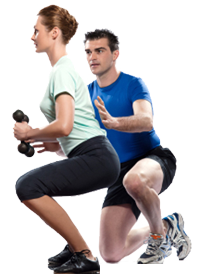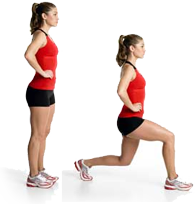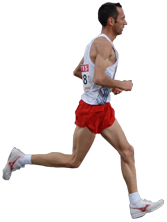(855) DRKAREEM | support[at]DrKareem[dot]com
your Knees

Exercise can be so confusing -- and the debate over whether exercise is good or bad in the long-term is multi-factorial. Here are a few interesting questions I think should be considered before performing any other studies:

- For starters, which exercises are being chosen?
- How is the form when people are doing their exercises?
- Is muscle sequencing being taken into account?
- What are the considerations for pain and inflammation, and how does this affect a workout for the next week or month?
- And, most importantly, are the most ‘popular’ exercises actually the ones causing more harm than good?
In actuality, the exercises you choose will have a substantial impact on the long-term health benefit of your exercise program. In today’s world, we are living 2-3x as long as 100 years ago, which means we have to deal with health issues our family members never had to consider a couple of generations ago.
One special consideration with aging, today, is our knees. Our knees seem ‘made to break,’ over the course of our lifetimes, and many people are facing a knee replacement, if not two or three during their lives. Meniscal tears, ACL tears, LCL tears, MCL tears, knee tracking issues, and other injuries seem to be increasing in frequency, even though rehab and surgery are constantly improving and healing injuries more quickly.
Here are three exercises you might want to take another look at to improve form or adjust before pushing too hard and breaking down your knees:

I find lunges to be one of the most important exercises in any workout, and I make it a point to do them several times per week. However, when done incorrectly, they are the single exercise that creates the most damage. This type of damage can entail:
- Knee tracking issues (painful bending of your knees or straightening)
- Meniscal pain (inside of your joint pain, especially with deep knee flexion)
- Sprain/Strain in the quads, hamstrings, or ligaments of the knee
It all comes down to which leg is doing the work (should be your front glute,) and whether or not you feel pressure in your back leg. Most people, when you ask them where they feel a lunge, they tell you their quads are burning, and you ask which one... almost always, it’s the back leg.
CAREFUL: If you feel lunges in your back leg, you’re in trouble, and you need to fix your form.

This popular, yet controversial exercise, has marginal benefit beyond 95 degrees of flexion -- just below a right angle -- when you squat. From an anatomical perspective, pressure is placed into the posterior meniscus of your knee when you squat below this level, and this can/will result in tear over time.
Instead of squatting so deeply, it’s best you ensure you’re squatting deep enough, but not too far. A lot of people preference ‘weight’ over ‘depth’ and end up missing the most important part of the squat: 95 degrees knee flexion (bottom) to 70 degrees knee flexion (top.) This is where you grow muscle at the fastest speed, and it’s a range of motion that functions to increase your strength at two to three times the rate of any other portion of your squat.
Having said that, below 95 degrees is DANGEROUS.
So, it’s important you get to the bottom, but you stop yourself on time. That’s why I always recommend you squat next to a mirror, where you can see how far to go and when to reverse your direction. Get in the habit of a one second hold at the bottom of each squat until you’ve mastered this point in the range of motion, and you’ll watch your results exponentiate while you greatly reduce your chance of injury.
One important point: Make sure your knees are always behind your toes when you squat, or you’re placing TONS of pressure into the front of your knee and patellar tendon.

I hate to run, unless I’m sprinting, stopping, repeating. I tend to land with too much force on every step, translating stress, vibration, and shock into my ankles, knees, hips, and spine. If I run longer than 7 miles, I definitely know about it the next day.
That said, I know that running is therapeutic for many of my patients and clients, it’s ‘portable,’ which makes it convenient, and it’s addictive, which I like. So, I attend every running talk I can when going to the Combined Sections Meeting (CSM) for Physical Therapy each year, and I learn all about barefoot running, sprinting, endurance-based running, Iron Mans, marathons, etc.
One thing that continues to surface is the risk/benefit ratio of running beyond 7 miles. From a naturalistic perspective, it’s hard to believe we would ever have had a need in nature to go beyond this distance without rest. Personally, I notice joint inflammation in myself and my patients if they run longer. There seems to be an increased incidence of strain/sprain, more tissue restrictions, and a greater chance of knee osteoarthritis with aging in avid long-distance runners.
My suggestions are simple, if you love to run:




Take some time and really ‘think’ about your strategy working out. Are you causing more harm than good or are your taking care of your body and building the best version of yourself?




